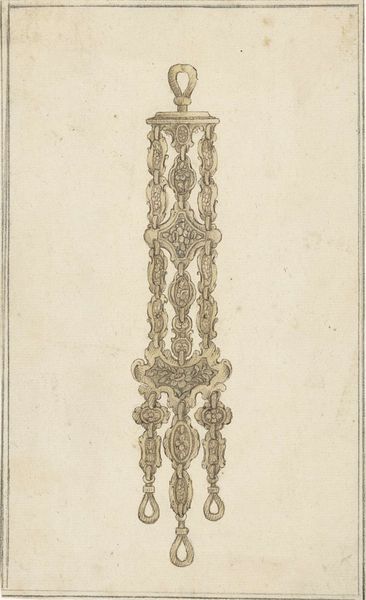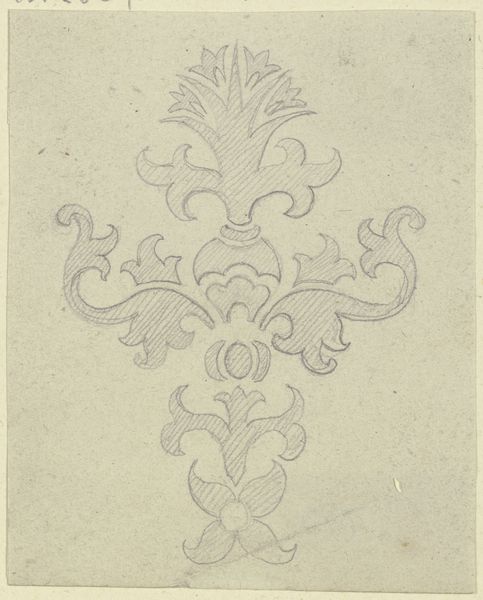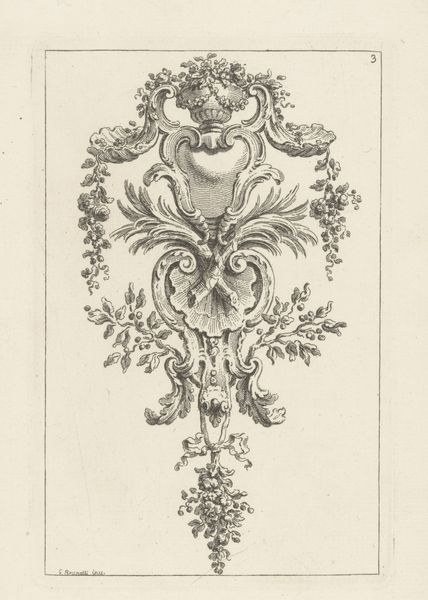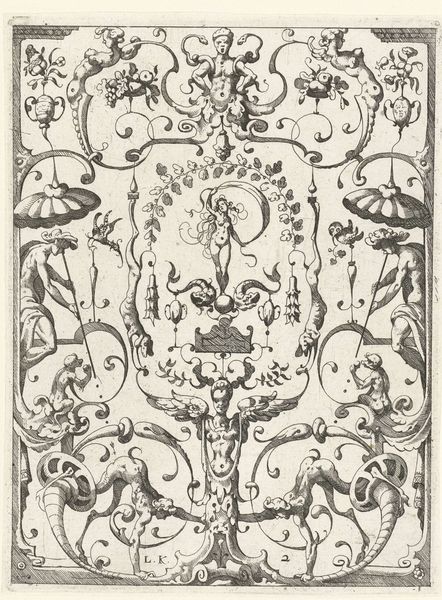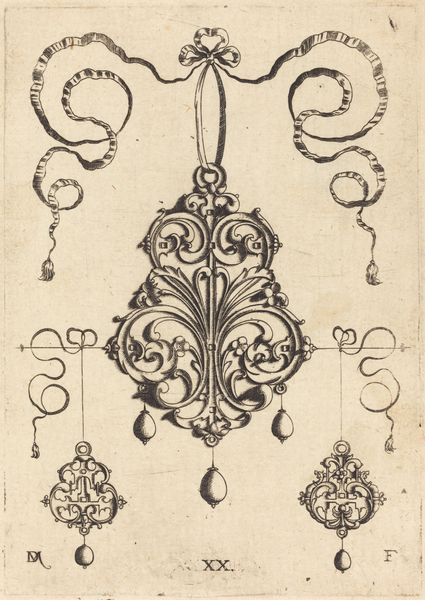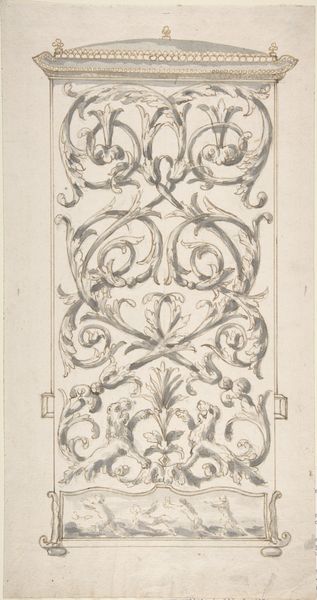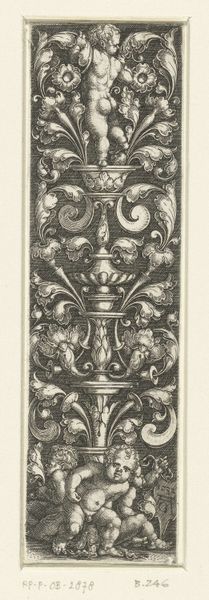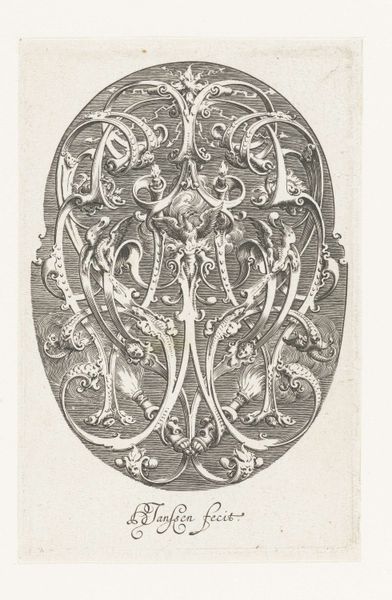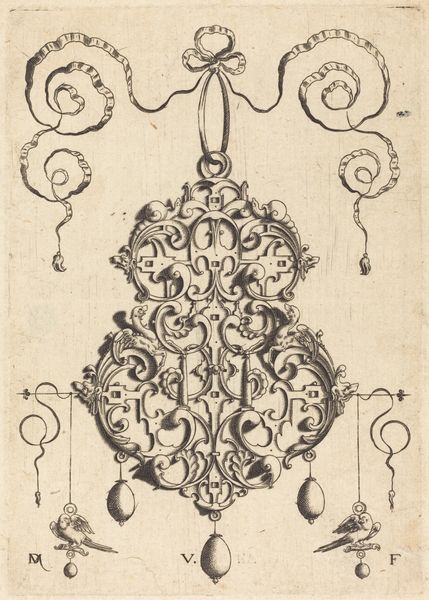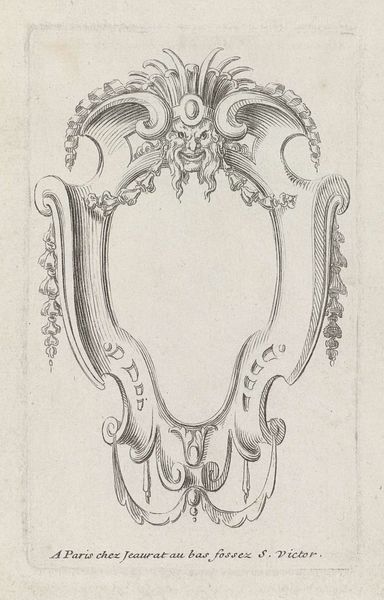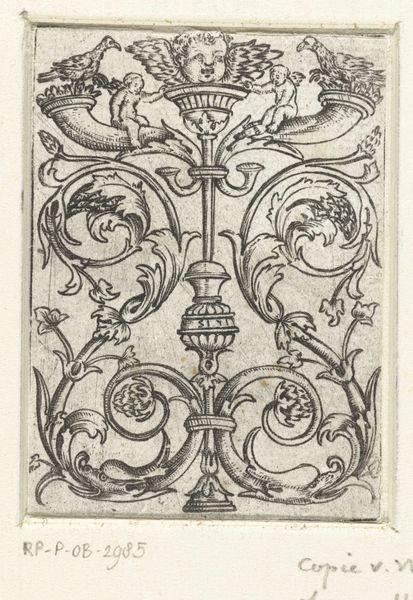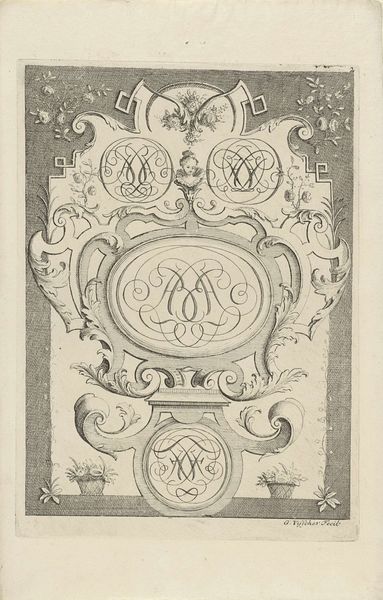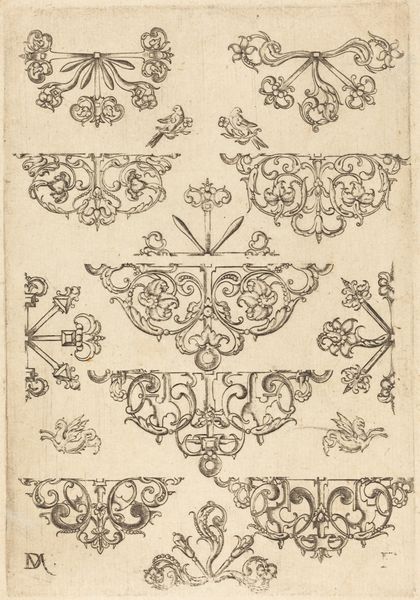
Dimensions: height 309 mm, width 138 mm
Copyright: Rijks Museum: Open Domain
Jordanus Hoorn made this ornament drawing with pen in brown ink during the late eighteenth or early nineteenth century. At the time, the decorative arts in the Netherlands were dominated by classicizing styles, as wealthy patrons sought to emulate French and Italian tastes. Hoorn's symmetrical design features stylized foliage, vases, and classical figures, all common motifs found in interior decoration, furniture, and metalwork. These designs, with their roots in the Italian Renaissance, spoke to a desire for refinement and order. The drawing itself might have served as a source of inspiration for artisans or as a demonstration piece for students. To truly understand this drawing, we would need to delve into the pattern books and design schools of the period, examining how these institutions shaped artistic production. By exploring archives and period publications, we can better understand the values and aspirations embedded in this seemingly simple ornamental design.
Comments
No comments
Be the first to comment and join the conversation on the ultimate creative platform.
